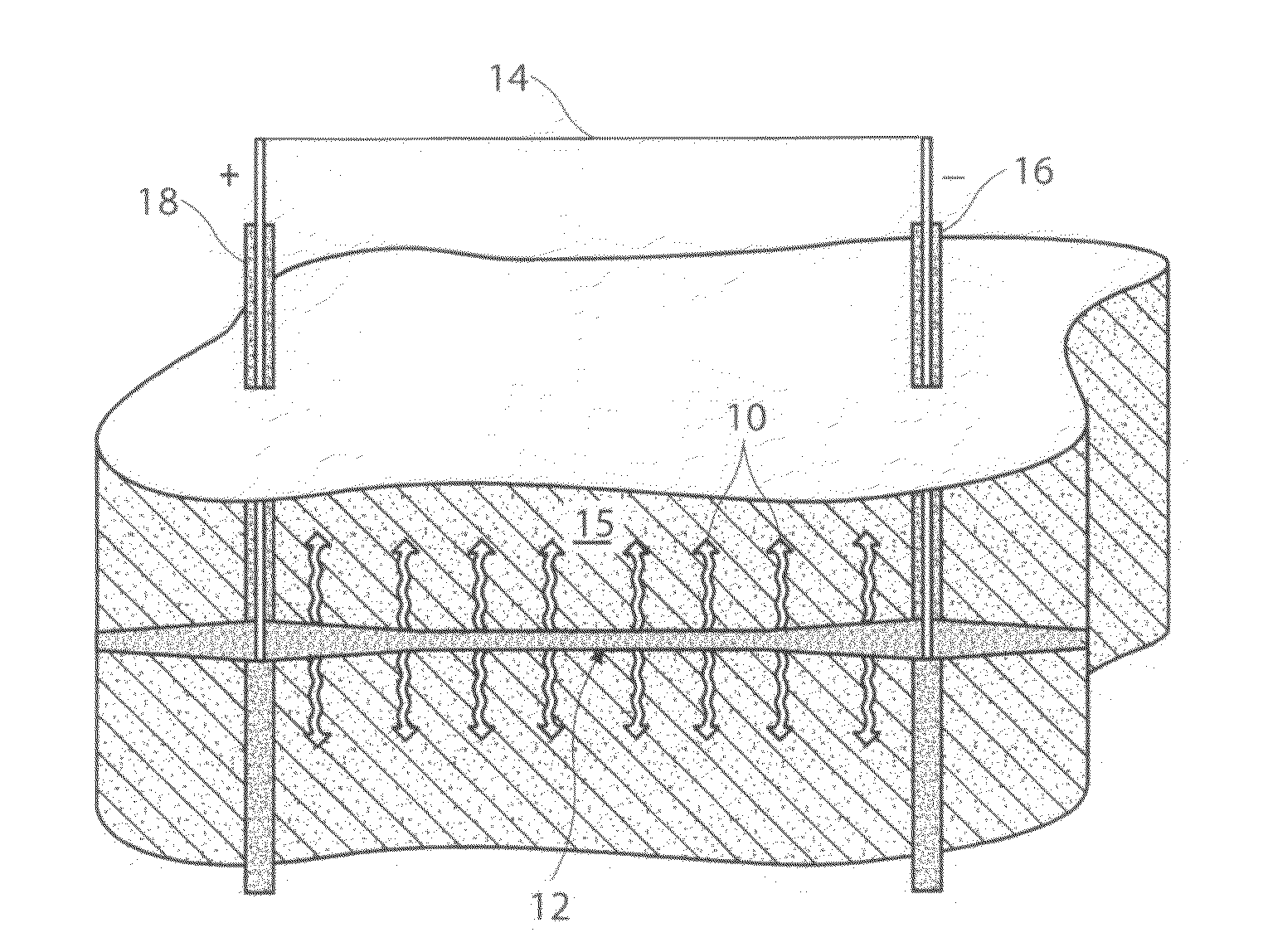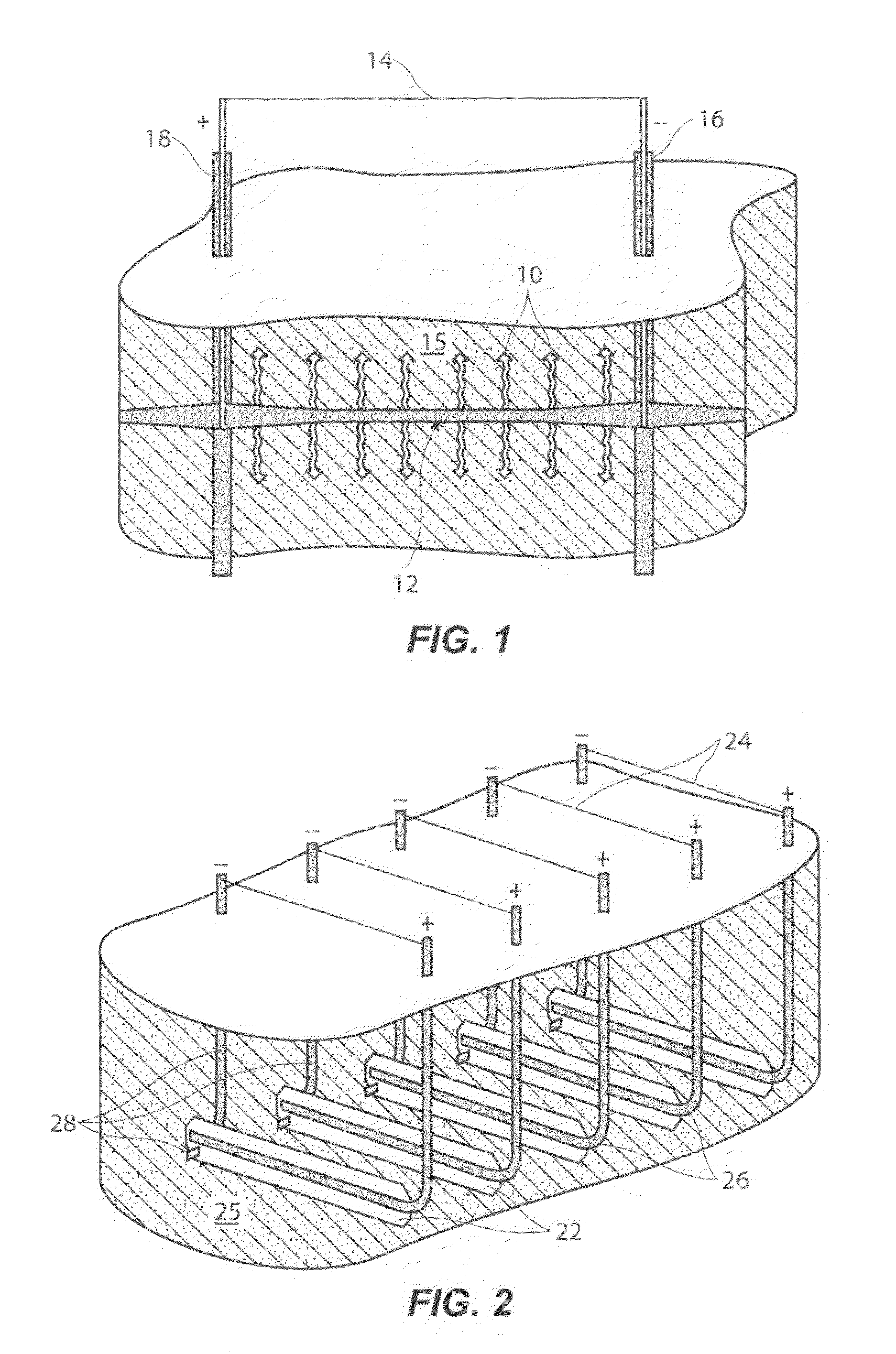Methods of treating a subterranean formation to convert organic matter into producible hydrocarbons
a technology of subterranean formations and hydrocarbons, which is applied in the direction of fluid removal, earthwork drilling and mining, and well accessories, etc., can solve the problems of reducing the viscosity of hydrocarbons, reducing the viscosity of hydrocarbons, and reducing the viscosity of hydrocarbons, etc. , to achieve the effect of reducing the viscosity, reducing the viscosity, and reducing the viscosity
- Summary
- Abstract
- Description
- Claims
- Application Information
AI Technical Summary
Benefits of technology
Problems solved by technology
Method used
Image
Examples
example
[0054]A laboratory test was conducted and the test results show that this invention successfully transforms kerogen in a rock into producible hydrocarbons in the laboratory. Referring now to FIG. 3 and FIG. 4, a core sample 30 was taken from a kerogen-containing subterranean formation. As illustrated in FIG. 3, core sample 30 was cut into two portions 32 and 34. A tray 36 having a depth of about 0.25 mm ( 1 / 16 inch) was carved into sample portion 32 and a proxy proppant material 38 (#170 cast steel shot having a diameter of about 0.1 mm (0.02 inch)) was placed in tray 36. As illustrated, a sufficient quantity of proppant material 38 to substantially fill tray 36 was used. Electrodes 35 and 37 were placed in contact with proppant material 38, as shown. As shown in FIG. 4, sample portions 32 and 34 were placed in contact, as if to reconstruct core sample 30, and placed in a stainless steel sleeve 40 held together with three stainless steel hose clamps 42. The hose clamps 42 were tight...
PUM
 Login to View More
Login to View More Abstract
Description
Claims
Application Information
 Login to View More
Login to View More - R&D
- Intellectual Property
- Life Sciences
- Materials
- Tech Scout
- Unparalleled Data Quality
- Higher Quality Content
- 60% Fewer Hallucinations
Browse by: Latest US Patents, China's latest patents, Technical Efficacy Thesaurus, Application Domain, Technology Topic, Popular Technical Reports.
© 2025 PatSnap. All rights reserved.Legal|Privacy policy|Modern Slavery Act Transparency Statement|Sitemap|About US| Contact US: help@patsnap.com



